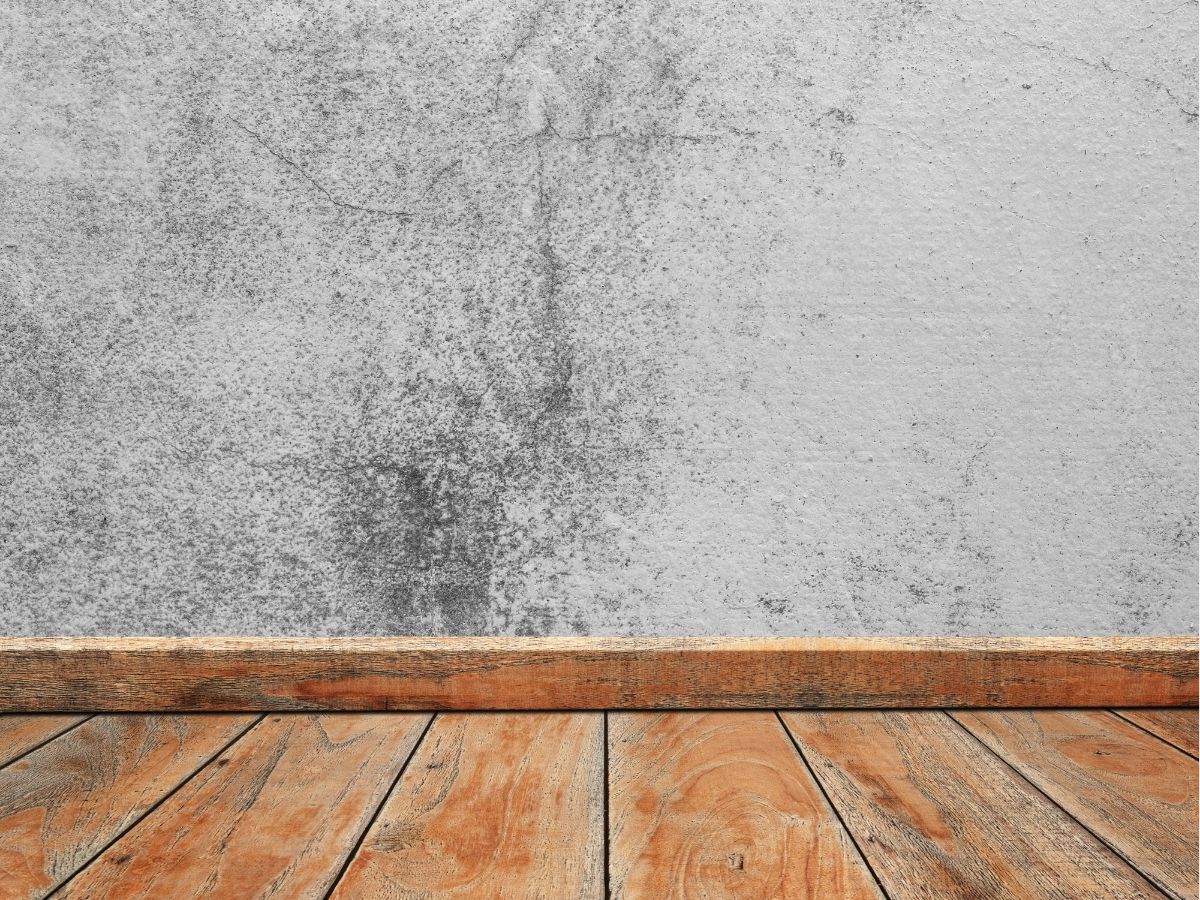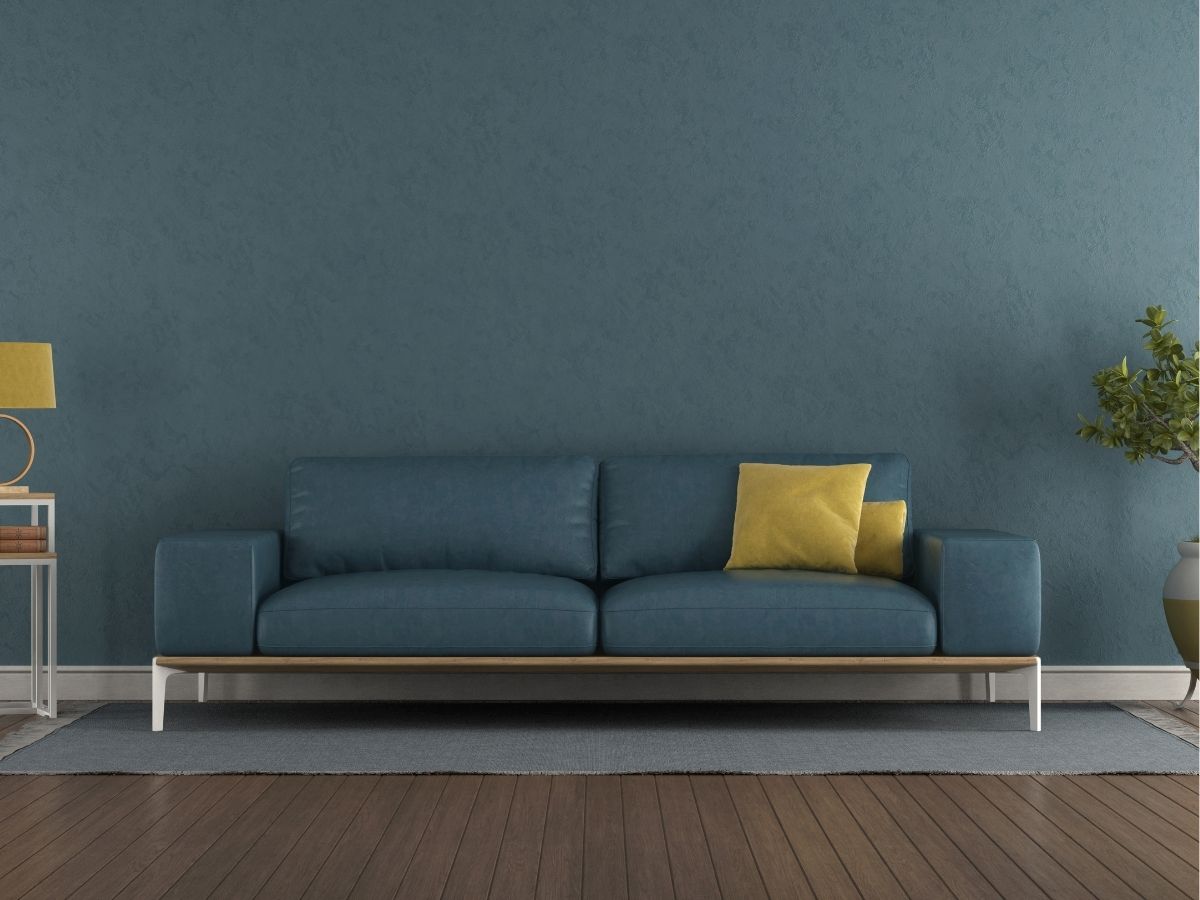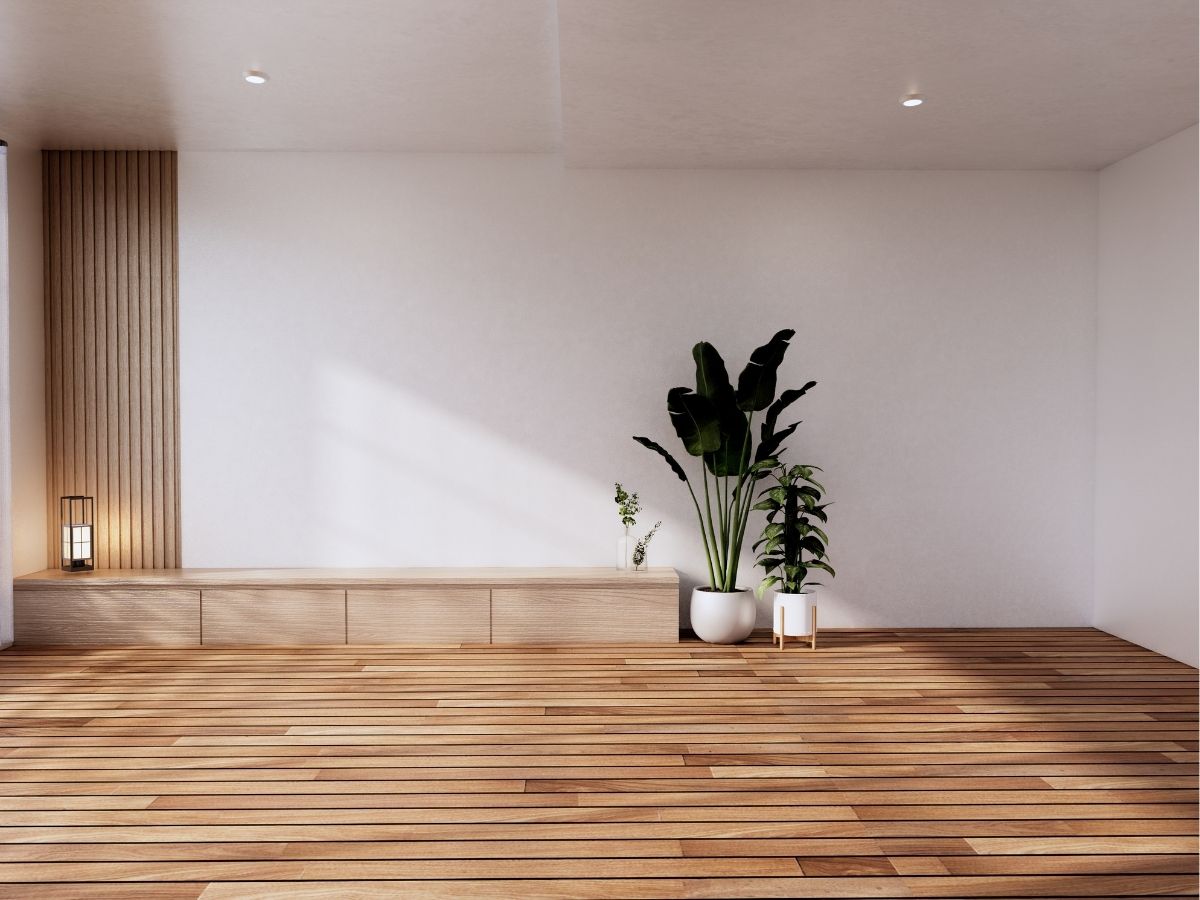If you’re a homeowner or DIY enthusiast, you may have noticed that your wood floors are showing signs of wear and tear: scratches, discoloration, stubborn stains, or even areas where the varnish has faded. Over time, even the sturdiest wood floors lose their original lustre through daily wear and tear, exposure to light, and variations in temperature and humidity. Fortunately, there’s a solution to bring them back to life: sandblasting.
Sanding a floor is a crucial step in any successful renovation. Not only does it eliminate surface imperfections, it also helps restore the natural beauty of wood, highlighting its unique fibers and hues. A well-sanded floor can literally transform the appearance of your interior, making the room brighter, warmer and more welcoming. But the benefits of sanding a floor don’t stop there. It also considerably extends the life of your wood floors, making them more resistant to future damage. By removing damaged layers and applying a new protective coating, wood becomes better protected against wear, stains and moisture.
However, sanding a floor should not be taken lightly, as it is not simply a cosmetic intervention. This technical step requires appropriate tools, meticulous preparation and precise know-how. Improper sanding can damage the wood or irreparably alter its appearance. So, whether you decide to do it yourself or call in the services of a professional, it’s essential to understand the steps involved.
In this article, we’ll explain everything you need to know about why you should sandblast a floor: its many benefits, the detailed steps to follow carefully and the common mistakes to avoid for a result that lives up to your expectations. Thanks to these tips, you’ll be able to restore your home’s charm and enjoy impeccable floors for many years to come.
Table of Contents

The benefits of sanding a floor
Sanding a wood floor offers many benefits, both practical and aesthetic. Whether your aim is to modernize a room, renovate a worn floor or preserve a heritage floor, this operation can make all the difference. This traditional yet effective technique gives your floors a new lease of life and maximizes their potential.
1- Aesthetic enhancement
Sandblasting a floor is an ideal solution for transforming the appearance of a damaged floor. Deep scratches, embedded stains and wear marks disappear, making way for an even, perfectly smooth floor. Even a dull old floor can be restored to its original lustre using this method. If your floor has lost its former charm, sandblasting can reveal its natural colors and hidden textures, transforming your space. You can also choose a new finish, whether it’s a more modern shade, a gloss or matte varnish, or even a natural oil for a warm, authentic look.
2- Increased durability
By removing damaged areas and applying a new protective finish, your floor becomes more resistant to impact, daily wear and even moisture. This considerably extends the life of the wood, avoiding costly repairs or a complete renovation in the short term. What’s more, the new top coats applied after sanding provide an extra barrier against external aggressions, such as scratches caused by furniture or pets. So your floor stays beautiful and hard-wearing for years to come.
3- Enhancing the natural beauty of wood
Wood is a noble material, and each plank possesses unique grains, textures and nuances that can be masked by successive layers of paint, varnish or years of wear and tear. Sandblasting a floor reveals this natural beauty, bringing out the details and imperfections that make wood so charming. Not only does this give your home a warmer, more authentic look, it also adds a touch of elegance that is difficult to reproduce with other materials. What’s more, a well-maintained wood floor can increase the value of your property, a valuable asset if you’re considering resale in the future.
4- Improved hygiene
Old floor finishes and cracks often accumulate dust, dirt and even allergens, which can affect your home’s indoor air quality. These sometimes invisible particles can also become a breeding ground for dust mites and mold. By sanding your floor, you not only eliminate these residues, but also provide your family with a cleaner, healthier environment. A freshly sanded and properly maintained floor is not only aesthetically pleasing, it also helps maintain a more hygienic living space, especially for households with children or allergy sufferers.
In conclusion, sanding a floor is much more than a simple aesthetic operation: it’s a long-term investment that protects, enhances and beautifies your home, while improving your daily comfort. Whether you’re looking to modernize your interior or restore an old floor, sanding remains an essential solution for taking full advantage of the beauty and benefits of wood.
How to sand a floor: Step-by-step guide
Sanding a floor can seem daunting, but with the right preparation, the right tools and the right techniques, you can achieve a professional result without calling in a craftsman. Whether you’re renovating an old floor or preparing a surface before applying a new finish, this guide will take you through every step of this ambitious project.
1- Preparation
Preparation is an essential phase that guarantees not only optimum results, but also smoother, safer working.
- Clearing the room: Start by emptying the room completely. Remove all furniture, carpets, decorations and other objects that could get in the way. Even small objects, such as door mats or chair legs, should be removed. A clear room allows you to work efficiently and avoids inadvertent damage to objects. Next, clean the floor thoroughly with a broom or dry cloth to remove dust, dirt and debris. Particles left on the floor could damage the sander or make sanding a floor less efficient.
- Inspecting nails and screws: Look carefully for nails, screws or staples protruding from the wood. Use a hammer to drive in nails, or a screwdriver to tighten screws properly. These metal parts can cause sparks, damage the sander and even injure you as you work.
- Protecting adjacent surfaces: To prevent sanding dust from getting everywhere, protect walls, skirting boards and other adjacent surfaces. Use special DIY tape and place tarpaulins or sheets over vulnerable areas. If your room contains electrical outlets or switches, cover them too to prevent fine dust from entering.
- Checking your tools: Before you start, make sure you have all the equipment you need. A drum or orbital sander is essential for large surfaces, while an angle sander is ideal for hard-to-reach corners and edges. You’ll need different grits of sanding paper (coarse, medium and fine) to sand a floor gradually. Don’t forget a powerful vacuum cleaner for final cleaning, and personal protective equipment such as a dust mask, safety glasses and earplugs (sanders can be very noisy).
2- Techniques for sanding a floor
Once the room is ready, it’s time to take action. Effective floor sanding requires the right tools, abrasives and technique.
- Choice of sander: For major surfaces, opt for a drum sander, which is powerful and can quickly cover large areas. For beginners, an orbital sander may be easier to use, as it’s more maneuverable and less likely to create marks on the wood. For smaller areas, such as corners, edges or around pipes, an angle sander is essential. These special tools guarantee an even, professional finish.
- Sandpaper grit: The secret to good sanding is to progress in stages, using different grit sandpapers. Start with a coarse grit (40-60) to remove damaged top layers, such as old varnish or deep scratches. Then move on to a medium grit (80-100) to smooth the surface and correct any remaining imperfections. Finally, finish with a fine grain (120-150) to obtain a perfectly smooth surface ready for finishing. If the floor is very damaged, you can start with an even more aggressive grit, but always make sure to adapt the grit to the condition of your floor.
- Constant movement: When using the sander, maintain a regular and constant movement. Avoid standing still over an area, or going over the same spot several times, as this may create indentations or scratches in the wood. Always work in the direction of the wood grain to avoid cross-marking and ensure an even finish. Take your time, especially if you’re just starting out, to avoid mistakes that may be difficult to correct later.
3- Finish
Once you’ve finished sanding a floor, the finishing step is crucial to protect the wood and give it an aesthetic appearance.
- Thorough cleaning: Before applying a finish, clean the floor thoroughly. Use a powerful vacuum cleaner over the entire surface to remove all dust, paying particular attention to corners and edges. Next, use a slightly damp cloth to remove fine particles and prepare the surface to receive the finish. This cleaning ensures that the finish adheres properly and does not pick up dust residues.
- Applying the finish: The choice of finish depends on your preferences: a stain to enhance the wood’s natural color, a varnish for a glossy, protective surface, or an oil for a more natural, matte appearance. Apply a first coat with a brush or roller, taking care to distribute it evenly. Allow to dry according to the manufacturer’s instructions, then sand lightly with fine abrasive paper to remove any small roughness before applying subsequent coats. For optimum durability, apply at least two to three coats and allow to dry completely before replacing furniture.
With this step-by-step method, you can transform a worn floor into an elegant, durable surface. Not only do you save on labor costs, but you also get the satisfaction of having completed the project yourself. Enjoy your work!

Common mistakes to avoid
While sanding a floor may seem straightforward, certain mistakes can quickly complicate the process and affect the final result. Whether it’s a lack of preparation or the use of inappropriate tools, these faux pas can be costly in terms of time and effort. Here are the mistakes to avoid and how to correct them for impeccable results:
Using the wrong sander
The wrong sander can damage your floor or create irregularities that are difficult to correct. For example, a sander that is too powerful may dig into the wood, while one that is too light may not remove enough material. Make sure you use the right tools for the type of wood, the thickness of your floor and the surface to be treated. If you’re not sure which tool to choose, don’t hesitate to ask a professional for advice, or rent a specialized sander from a DIY store.
Ignore the grain progression stages
Going straight to a fine grain without going through coarser grains may not remove deep-seated imperfections, such as scratches or embedded stains. This shortcut can waste time, as you may have to go back to correct defects you could have prevented. Always start with a coarse grit to remove damaged layers, then gradually move on to finer grits to achieve a smooth, even surface.
Neglecting to clean up after sanding a floor
Any dust left on the floor can compromise the adhesion of the finish, whether varnish, oil or wax. This dust can form a grainy texture on the surface, spoiling the aesthetic appearance and durability of the work. After each sanding, use a powerful vacuum cleaner to remove residues, then wipe with a slightly damp cloth or microfiber mop to capture fine particles. Take time to check corners and edges, where dust tends to accumulate.
Rushing to finish without preparation
A finish applied to an unprepared surface risks not only looking uneven, but also not lasting over time. For example, uncleaned residues or stains may appear under the varnish, leaving an unprofessional appearance. Before applying a protective coat, inspect the surface thoroughly, clean it and allow it to dry completely. Also, make sure you choose a finish suited to the use of the room (for example, a hard-wearing varnish for a high-traffic room like a living room).
With these tips, sanding a floor becomes an affordable project that can transform the look and durability of your interior. Taking the time to prepare each step and work carefully will give you a professional result that will enhance the beauty of your home for years to come. Whether you’re a beginner or an experienced do-it-yourselfer, the key to success lies in patience and attention to detail. So equip yourself properly, follow good practices, and enjoy a renovated floor that will bring warmth and elegance to your living space.
Choosing the right equipment for floor sanding
Choosing the right equipment is essential for successful floor sanding and professional results. Quality equipment will save you time and energy, and give you an impeccable finish, even on the most complex surfaces.
Safety accessories
Don’t forget to wear a dust mask to protect your lungs, goggles for your eyes, and earplugs to reduce exposure to the high noise levels generated by the machines. This equipment is essential to ensure your safety and comfort throughout the process.
Drum or orbital sander
The drum sander is ideal for treating a large surface area quickly, making it an excellent choice for badly damaged floors or large rooms. On the other hand, orbital sanders are easier to handle and more suitable for smaller surfaces or areas requiring precise finishing. It is also recommended for beginners, thanks to its more intuitive handling.
Industrial vacuum cleaner
A powerful vacuum cleaner is essential to effectively remove the dust produced by sandblasting. Opt for a model with an adapted filtration system to prevent fine particles from spreading into the air in your home, guaranteeing a cleaner, healthier working environment.

Why call in a professional to sand a floor?
While sanding a floor can be an exciting project for do-it-yourselfers, it requires technical skills and professional equipment to guarantee optimum results. An expert will be able to analyze the condition of your floor, choose the most suitable tools and carry out the sanding precisely and efficiently. This avoids costly mistakes, such as sanding too deeply or choosing the wrong finish, which can cause lasting damage to your wood.
What’s more, calling in a professional will save you precious time. You won’t have to rent or buy equipment, or learn the techniques involved in sanding a floor. So you can concentrate on other aspects of your project, or simply enjoy the final result without stress or complication. An expert also guarantees a finish that will stand the test of time, optimizing your floor’s protection and aesthetic appearance.
Ready to turn your worn-out floors into works of art? Contact our team of experts today for professional, long-lasting, uncompromising results! We’re committed to bringing new life to your floors, while ensuring a hassle-free experience and high-quality service. Request a free quote.
Mebesa offers sandblasting, dust-free sanding and floor installation and finishing services in the following cities: Saint-Hubert, Montreal, Brossard, Boucherville, Sainte-Julie, Saint-Constant, La Prairie, Chambly, Sainte-Catherine, Saint-Lambert, Longueuil, Laval, Delson, Pointe-Claire, Saint-Sauveur, Saint-Jean-sur-Richelieu, Terrebonne, Repentigny, Granby, Kirkland, Châteauguay, Beloeil, Candiac, Saint-Bruno-de-Montarville.
For more information on hardwood flooring, see the following articles:
Montreal South Shore: Floor sanding experts available in over 20 cities
Dust-free wood floor finish, what are the benefits?
Simple 6-step method for sanding hardwood floors
Simple 3-step price estimate for hardwood floor sanding
Frequently asked questions
-
Why sand wood?
Sanding a floor is an essential step in restoring the wood’s fresh, natural appearance. It removes old layers of varnish, paint or wax, while revealing the wood’s natural fibers. This prepares the surface for a new protective finish, such as varnish, oil or wax, which will extend its life and enhance its original beauty.
-
How do I sand a floor?
Sanding a floor involves sanding the surface using a machine called a sander. It’s important to start by removing all furniture and protecting walls and baseboards with tape to prevent damage during the process. Next, use a coarse abrasive grit to remove all old layers of finish, then continue using increasingly finer grits to achieve a smooth, even surface. Once sanding is complete, we recommend applying a new top coat to protect the wood and restore its natural lustre.
-
How do I clean up after sandblasting?
Once you’ve finished sanding a floor, use a powerful vacuum cleaner to remove not only visible dust, but also fine particles that could affect the finish’s adhesion. Then wipe the surface with a damp cloth to catch any remaining residue. Allow the wood to dry completely before applying the finish, as any moisture could alter the final result.






0 Comments